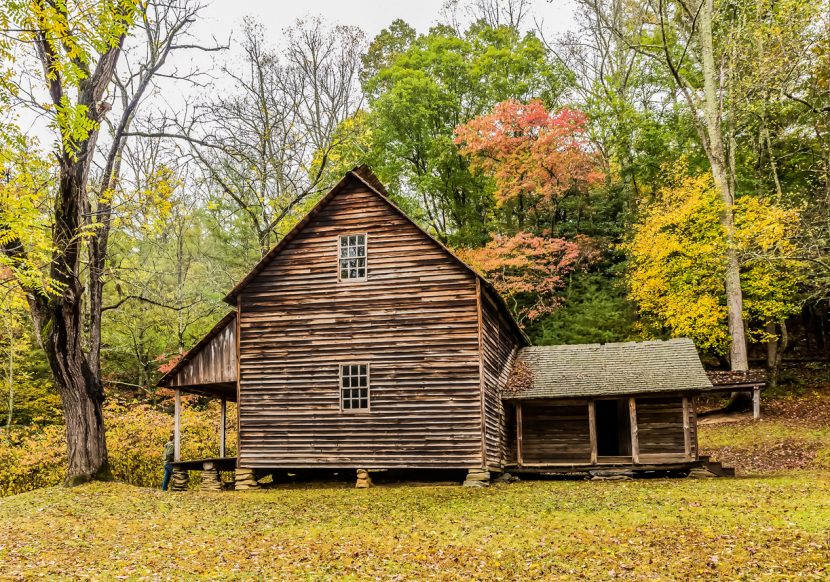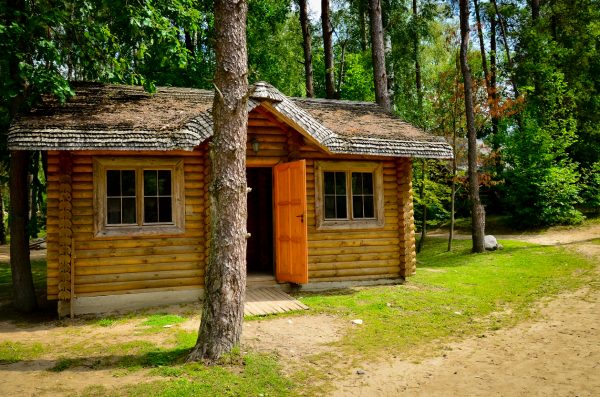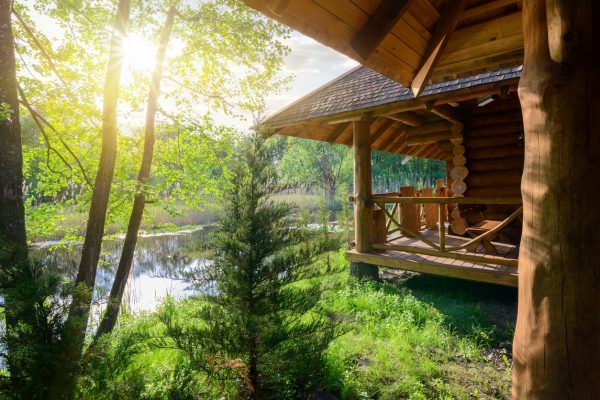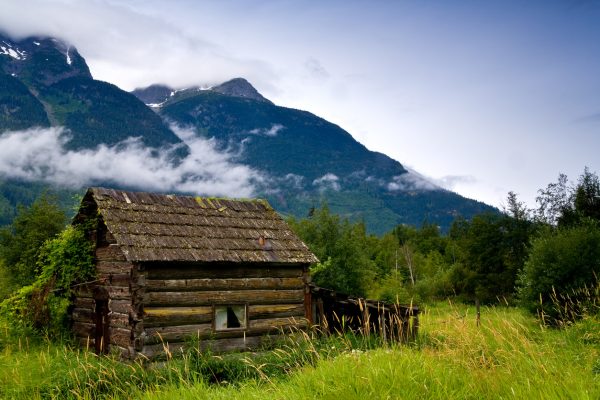The History of Log Cabins & One of The Best Survival Shelters

When most of us think of a survival shelter, the image that pops into our heads is that of the log cabin. Log cabins are very much a part of American history and especially the American west. So that’s what we tend to see, when we think of having to bug out or build ourselves a shelter in the woods.
Granted, a log cabin is a great option. They are solid and durable, able to last for years. I’ve seen log cabins in the Colorado Rockies that are over 100 years old, and still lived in – there are some that are over 300 years old and still functioning. Of course, they need to be built in an area where there are plenty of trees to work with, and they’ve got to be the right kind of trees, not just any tree will do.

The trick here is having trees with long, straight trunks. This means mostly pines and firs. Of these, the best is one known as the “lodgepole pine.” Growing mostly in the Northwest and in mountainous terrain, the lodgepole can grow up to 70 or 80 feet tall, when fully mature.
As the tree grows, branches lower down die and fall off, being replaced by ones that are higher up, where they can better catch the sunlight. This means that a fully mature lodgepole pine can provide about 50 feet of trunk, without branches on it.
Because they grow so tall, the trunks of lodgepole pines don’t taper rapidly, so you end up with logs which are pretty much the same diameter throughout. This makes it easier to build the cabin, as you don’t have to stagger logs, to keep it level and you’ve got less chinking to do.
Why Build a Log Cabin?
As with any other form of construction, log cabins became popular because of the availability of necessary materials. Once upon a time, vast forestlands once covered this land. This provided an abundant supply of building material for those who chose to build in this way.
Properly made, a log cabin is strong, well able to withstand winter storms. Even so, the walls don’t do a great job of providing insulation. In fact, it was not uncommon for the walls to have ice on the inside, even while the fire was roaring in the fireplace. But then, those early fireplaces weren’t all that efficient.
Log cabins had another advantage, which appealed to those settling the western lands. That is, they could do a pretty good job of stopping bullets and arrows.
By and large, the only ways to kill the inhabitants was to manage to get inside with them, where they could be shot, smoke them out or burn them out. It was possible to set one on fire, if one could get close, making burning them out a very real possibility.
Building a Log Cabin
People still build log cabins today, although not very many. I’ve seen a few videos online of people who built their own log cabin, doing without power tools and taking months to finish them. If I had the time and the place, that would be an interesting project, but I’m not holding my breath.

One nice thing about this sort of construction, is that it really doesn’t take a lot of tools. In many cases, log cabins on the frontier were built with nothing more than an axe, a saw and a draw knife. Granted, a few extra tools, like a froe, an adze and a chisel (with mallet) would make for better construction, but many of the people who built log cabins didn’t have much to work with.
The process of building a log cabin always starts with preparing the ground. Most are built without any sort of foundation, although there are ample examples of log cabins that were build over a low stone wall foundation.
In these cases, the foundation served double-duty as a root cellar, providing the family with secure food storage. If there was no root cellar, they would level the ground and pack it firm.
Building a log cabin is a lot of work… backbreaking work. The trees have to be felled, and cut into logs, with the branches stripped off. Then the bark is usually peeled off the logs, although there are plenty of examples around of log cabins with the bark still on. Peeling is accomplished with a draw knife and really doesn’t take all that long to do.
The most technically demanding part of building a log cabin is notching the logs, so that they can nestle together in the corners. This is important work and needs to be done accurately, so that the home has some structural strength. If the notches are too big, the logs can shift and eventually fall.
But if the notches are too tight, the logs will not nestle together snugly, causing gaps between the logs which would have to be chinked.
Chinking was usually accomplished with nothing more than mud mixed with straw, although if clay could be found, it would be used. Clay, even unbaked, is not as susceptible to being washed away by water, helping it to last longer. Even so, chinking was one of those jobs that had to be completed every fall, in preparation for the cold nights of winter.
Almost all log cabins were square or rectangular, as it really wasn’t all that easy to make multiple rooms. Over time, those additional rooms might be added on, almost like building a separate cabin and connecting the two together.
Framing in doors, windows and the fireplace was one of the more technically challenging parts of the project. There were several ways this could be done, including using hewn beams for the door and window frames.
If those weren’t possible, the frames might be nothing more than more logs, cut to fit. The horizontal logs would usually fit into these frames by creating large mortises and tenons.
The fireplace and chimney were another challenge, as they required a totally different type of construction. While there are some examples of log cabins with log chimneys, most were made of stone.
This would be whatever stone was available on the property, fitted together and mortared with a mixture of sand and lime. As with the doors and windows, the logs of the cabin would have to come to an end, snug up with the edges of the fireplace.

Some log cabins never had a proper chimney, settling for nothing more than a smoke hole in the roof, with a pit fore in the middle of the cabin. While this provided more heat from the fire itself, it also allowed much of that heat to escape through the smoke hole.
After building the walls, the roof was even more of a challenge. Some built a simpler roof structure and covered it with thatch or sod, but others made a log roof. This would require two solid ranks of thinner logs, brought together and sealed with sap from trees. The walls at the gable ends would often need some sort of temporary support, until the roof was completed.
If there was a sawmill available nearby, then door frames and doors could be made out of boards. Likewise, the roof could be covered with planks, rather than logs, making it both more waterproof. This was a real advantage, for those who could use it.
The loft was an important part of many log cabins, as it was the bedroom, if not for the whole family, then for the children. With the heat from the fireplace rising, the loft would be warmer than the rest of the cabin.
Doors and windows often started out as nothing more than cloth or skin coverings, until something more permanent could be made out of wood. These details could often take years, as the inhabitants worked to finish and improve their home, between farmwork and other necessities.
Log Cabins in a Survival Situation
Were you or I to be faced with a survival situation, where we needed to create an alternate home in the wilderness, a log cabin would be a good alternative. While they are hard to build, they would provide a secure and durable home for your family. Just make sure you have the right tools to work with, as having the right tools will make your job easier and your log cabin turn out better.
